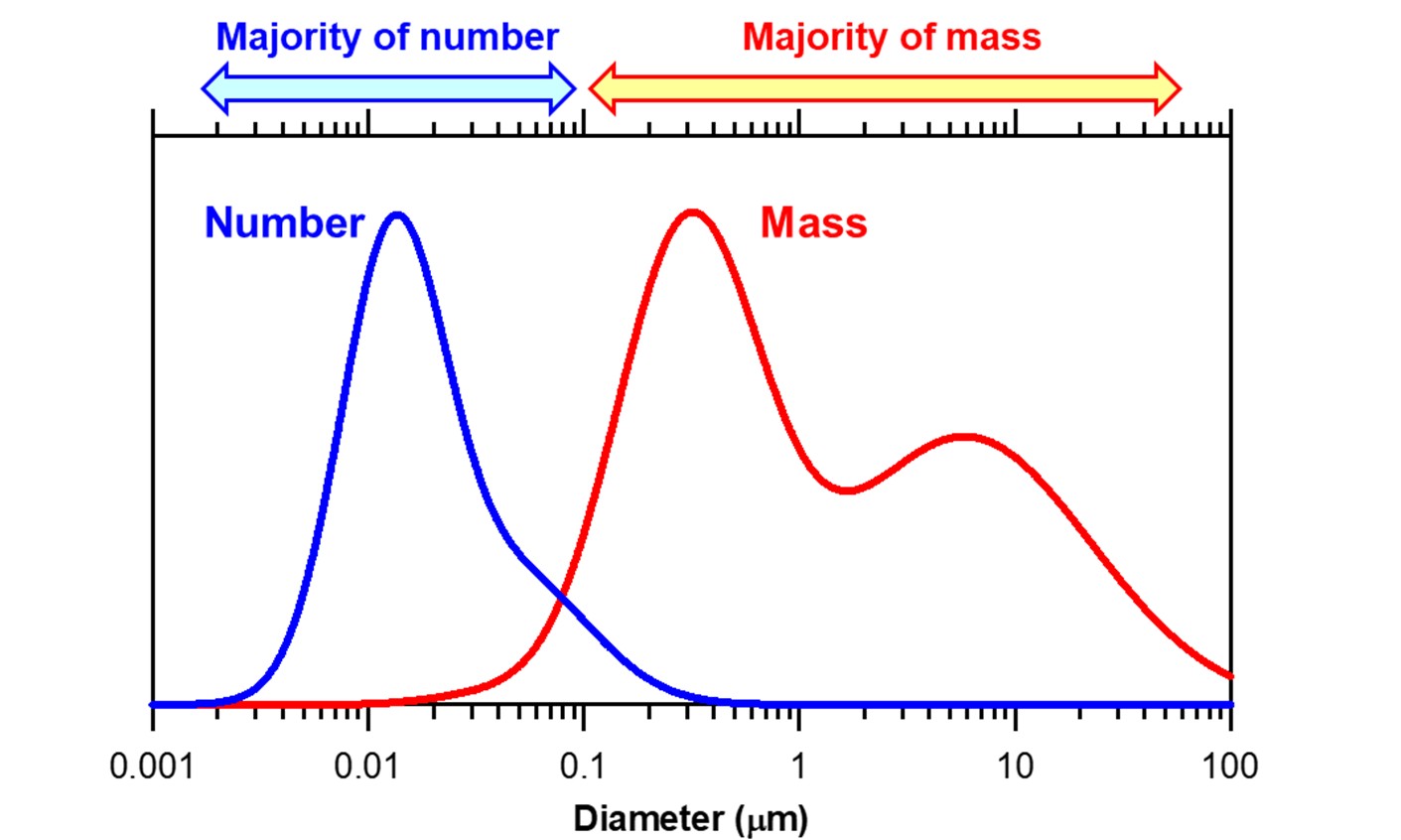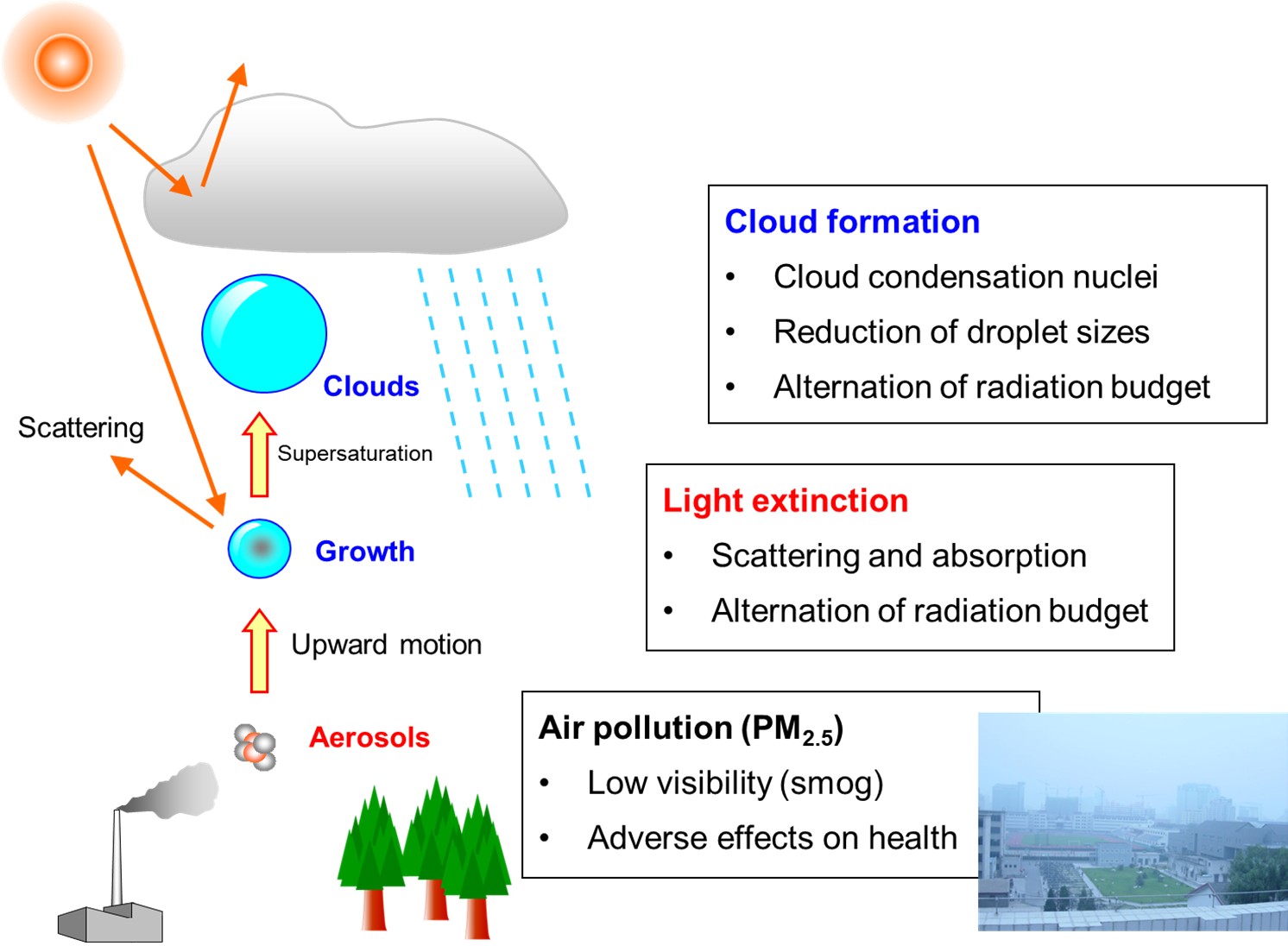An aerosol is defined as a suspension of particles in air. The sizes of aerosol particles range from a few nanometers to several tens of micrometers, and the chemical compositions of aerosol particles show large variability depending on the emission sources and formation processes. Fig. 1 shows example aerosol size distributions in the atmosphere. The majority of the particle number is found in the diameters smaller than 100 nm, whereas that of the particle mass is found in the diameters larger than 100 nm. Aerosols significantly affect air quality in urban air as they have adverse effects on human health. Aerosols can also affect the regional and global climate by altering the radiative balance of the Earth’s atmosphere (Fig. 2). The physical and chemical characterization of aerosol particles is important for improving our understanding of the environmental impacts of aerosols.

Fig. 1. Example aerosol size distributions in the atmosphere.

Fig. 2. Environmental impacts of aerosols.
Reference Book
- Seinfeld, J. H., & Pandis, S. N. (2016). Atmospheric chemistry and physics: from air pollution to climate change. John Wiley & Sons. ISBN-13: 978-1118947401